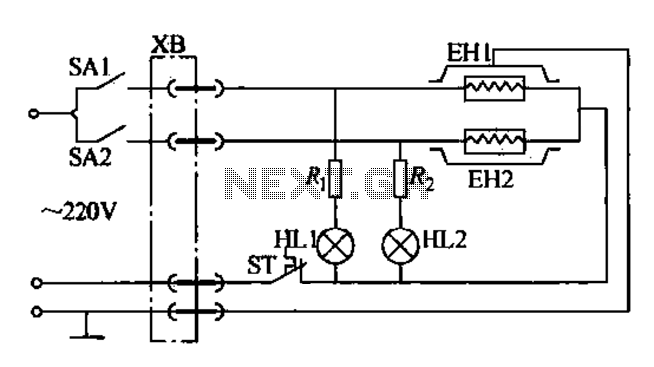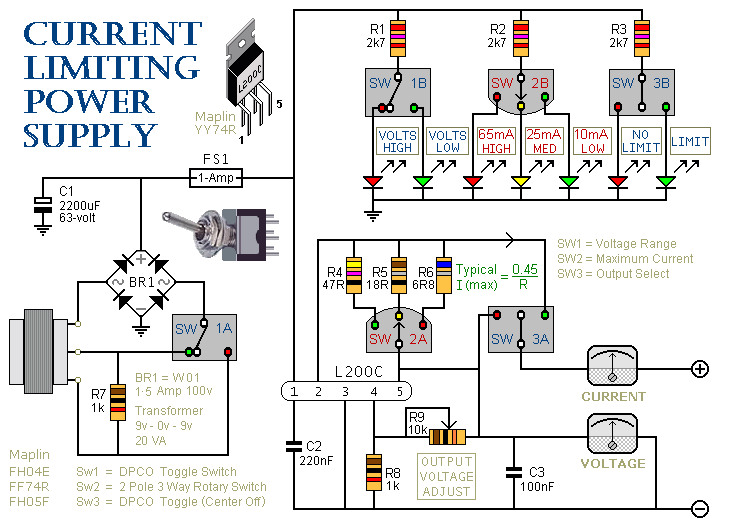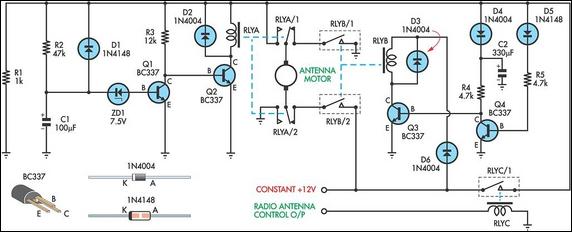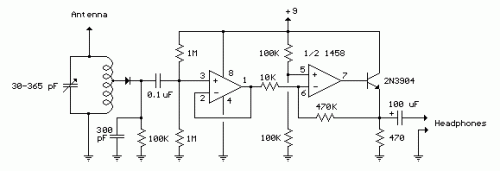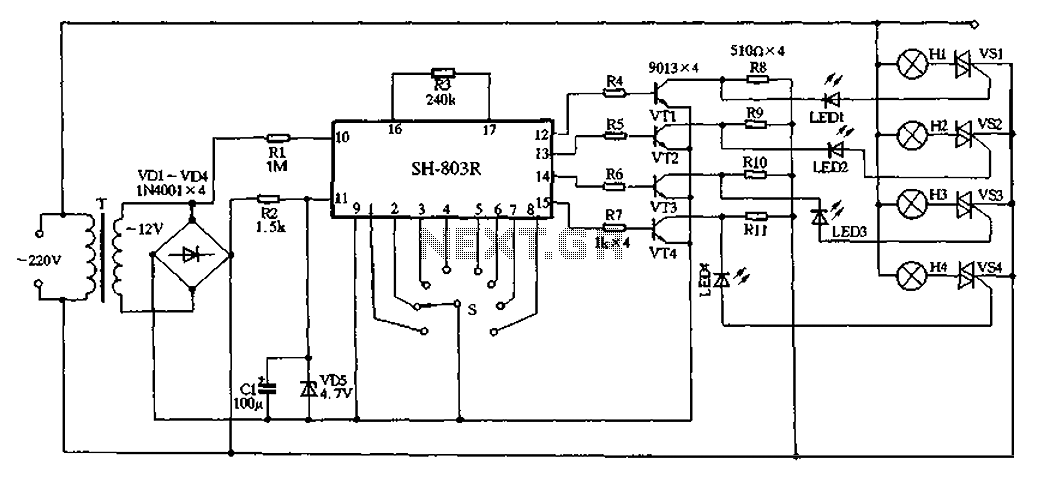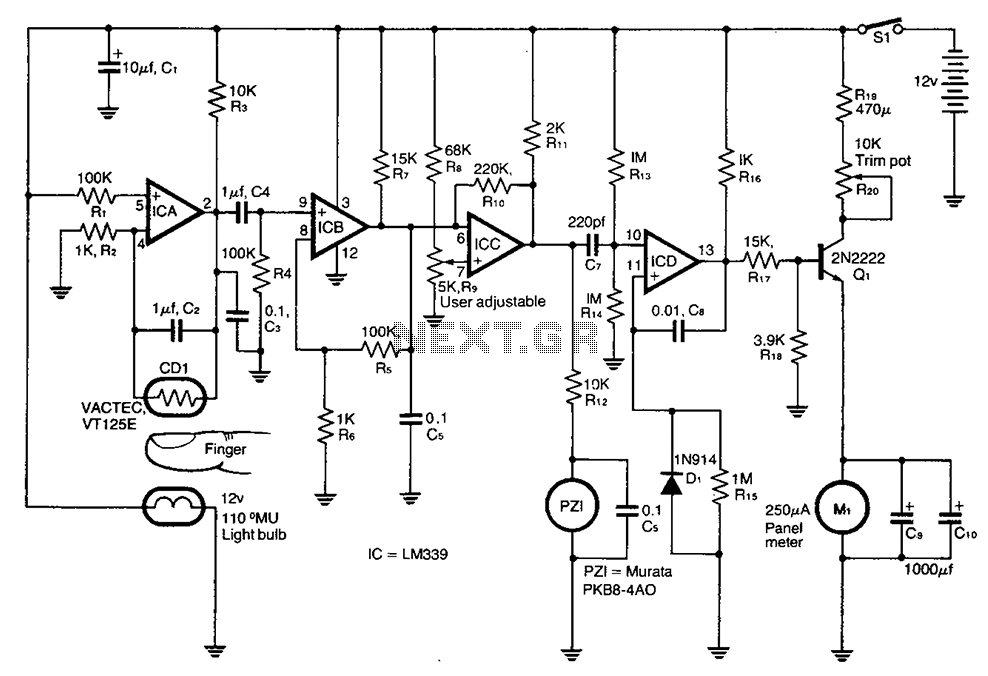
LM4911 without an output capacitor OCL power circuit
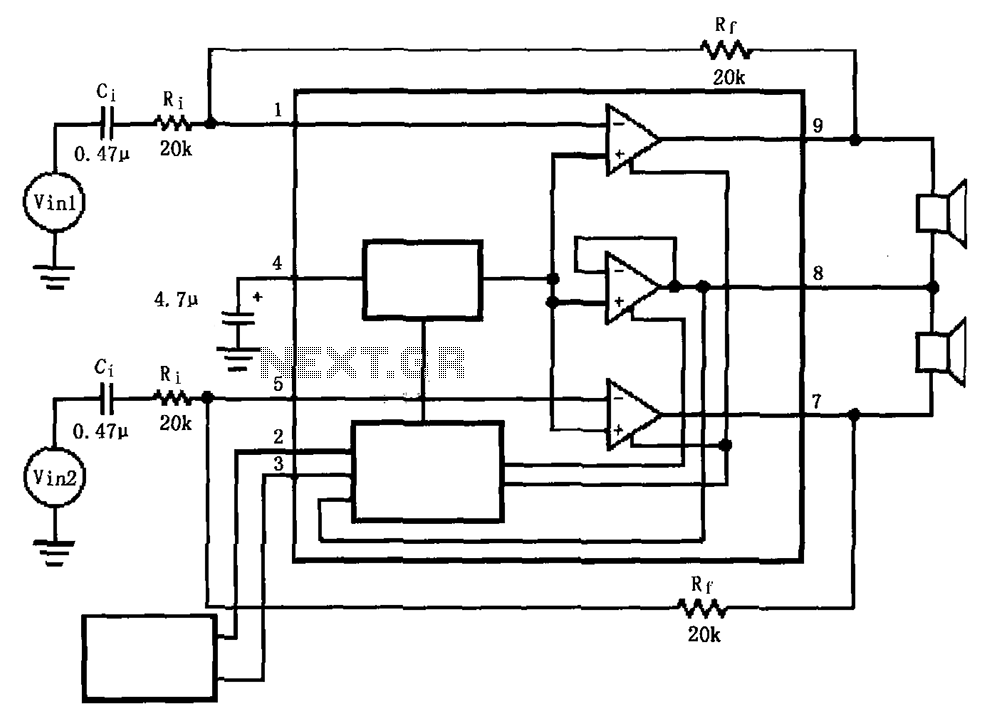
The LM4911 is presented in a configuration that does not utilize an output capacitor (OCL) for its power circuit. This design eliminates the need for squelch control (Mute), as the shutdown control (SD) responds more rapidly than the squelch control, effectively turning off the circuit to mitigate any slight noise issues. The maximum power consumption for this circuit without an output capacitor is given by the formula PDMAX = 4VDD² / (2R).
The LM4911 is a low-power audio amplifier designed for applications requiring high efficiency and minimal component count. In configurations without an output capacitor, the circuit can achieve a more compact design, reducing the overall footprint of the system. The absence of an output capacitor in the power circuit allows for a direct connection between the amplifier output and the load, which can be advantageous in achieving better transient response and lower distortion.
The shutdown control (SD) feature is critical in this configuration, as it ensures that the amplifier can quickly turn off in response to control signals, thereby preventing any unwanted audible artifacts such as bashing noise during transitions. This rapid response is particularly useful in battery-operated devices, where power conservation is essential. The squelch control (Mute) is typically used to suppress noise during idle periods; however, in this design, the shutdown control serves as a more effective solution, providing a cleaner output without the need for additional components.
The power consumption of the circuit is an important factor to consider, especially in low-power applications. The maximum power consumption is calculated using the formula PDMAX = 4VDD² / (2R), where VDD represents the supply voltage and R is the load resistance. This equation highlights the relationship between supply voltage, load resistance, and power dissipation, which is crucial for designing efficient audio amplification systems.
Overall, the LM4911's configuration without an output capacitor presents a viable solution for applications that prioritize compactness and efficiency while maintaining audio quality. The design effectively balances the need for rapid shutdown capabilities with the goal of minimizing power consumption and noise. As shown for the LM4911 no output capacitor (OCL) power circuit. Without an output capacitor (OCL) power circuit without using squelch control (Mute), because then the shutdown control (SD) faster than the squelch control (Mute) comes and turns off to eliminate the slightly - bashing noise. The maximum power consumption without an output capacitor circuit PDMAX 4VDD2/2R.
The LM4911 is a low-power audio amplifier designed for applications requiring high efficiency and minimal component count. In configurations without an output capacitor, the circuit can achieve a more compact design, reducing the overall footprint of the system. The absence of an output capacitor in the power circuit allows for a direct connection between the amplifier output and the load, which can be advantageous in achieving better transient response and lower distortion.
The shutdown control (SD) feature is critical in this configuration, as it ensures that the amplifier can quickly turn off in response to control signals, thereby preventing any unwanted audible artifacts such as bashing noise during transitions. This rapid response is particularly useful in battery-operated devices, where power conservation is essential. The squelch control (Mute) is typically used to suppress noise during idle periods; however, in this design, the shutdown control serves as a more effective solution, providing a cleaner output without the need for additional components.
The power consumption of the circuit is an important factor to consider, especially in low-power applications. The maximum power consumption is calculated using the formula PDMAX = 4VDD² / (2R), where VDD represents the supply voltage and R is the load resistance. This equation highlights the relationship between supply voltage, load resistance, and power dissipation, which is crucial for designing efficient audio amplification systems.
Overall, the LM4911's configuration without an output capacitor presents a viable solution for applications that prioritize compactness and efficiency while maintaining audio quality. The design effectively balances the need for rapid shutdown capabilities with the goal of minimizing power consumption and noise. As shown for the LM4911 no output capacitor (OCL) power circuit. Without an output capacitor (OCL) power circuit without using squelch control (Mute), because then the shutdown control (SD) faster than the squelch control (Mute) comes and turns off to eliminate the slightly - bashing noise. The maximum power consumption without an output capacitor circuit PDMAX 4VDD2/2R.
Warning: include(partials/cookie-banner.php): Failed to open stream: Permission denied in /var/www/html/nextgr/view-circuit.php on line 713
Warning: include(): Failed opening 'partials/cookie-banner.php' for inclusion (include_path='.:/usr/share/php') in /var/www/html/nextgr/view-circuit.php on line 713
